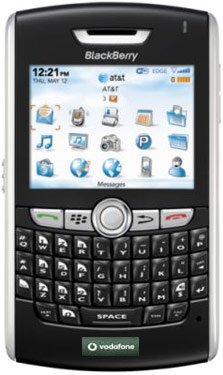When I first looked at Nvidia’s Ion platform last month, I tested in three different ways: as a desktop PC, as a gaming system, and as a home theater machine.
Of course, this meant a lot of extra time was spent actually using the configuration that Zotac sent my way. During the course of testing, I convinced myself that I’d never be truly happy with Ion as a desktop system, even under Windows 7—the operating environment I used, assuming Vista would be too cumbersome. It was just too slow. Sitting there waiting for menus to pop and apps to open just isn’t my gig—and I suspect many of the enthusiasts who read Tom’s Hardware would feel the same about a new technology purchase.
I also wasn’t impressed enough with Ion’s gaming performance to recommend it in such a role. Sure, I could jog around Ironforge using Fair settings in World of Warcraft, but who spends close to $200 on a motherboard/processor for that? When it comes to gaming, you could do much better for the money, or even a little more money.
Intel suggested that Ion was overkill last week at Computex, and it was right. Nvidia’s GeForce 9300 platform is more chipset than the Atom processor can handle. Though, to be fair, we’re expecting more out of the architecture here than Intel designed it to deliver.
Nevertheless, if there was one segment in which I suspected Ion might be able to succeed, it was the HTPC market, where GeForce 9300 could offload playback of HD video content and, hopefully, factor Atom right out of the picture.
Ion In The Theater
Given the platform’s GeForce 9300 foundation, which includes the latest generation of Nvidia’s PureVideo (VP3) technology, hardware offload of MPEG-2, VC-1, and AVC (H.264) is fully enabled—a good omen for using an Atom-based PC in a home theater environment.
Additionally, the chipset was said to support 7.1-channel LPCM audio over its HDMI output. Now, this feature is more important than you might realize at first. If you’re watching Blu-ray content on a big-screen TV in a home theater, there’s also a good chance you’re using six- or eight-channel surround sound. There are actually a few different ways to achieve multi-channel audio with your HTPC. Perhaps most familiar to the PC crowd is through a TOSLINK optical (or S/PDIF coaxial) output connected to your receiver. You can transmit encoded Dolby Digital and DTS signals over an optical cable, but not Dolby TrueHD or DTS-HD Master Audio—the two optional, lossless formats commonly featured on Blu-ray movies.
In order to play back TrueHD (with a maximum bitrate of 18 Mb/s) or DTS-HD (with a maximum bitrate of 24.5 Mb/s), you have to use an HDMI 1.3 connection. Hallelujah, Ion has that.
From there, you have two options. You can either pass the encoded Dolby TrueHD or DTS-HD signal to your receiver, which performs the decode and plays back the lossless studio soundtrack in all of its glory, or use your DVD software to decode the signal and pass multi-channel linear PCM over the HDMI output (so long as it’s supported).
The problem with the former is that it requires a protected audio path—otherwise your decoding software will fall back to lossy codecs like Dolby Digital and DTS. We’re still waiting on a chipset that’ll do this, but right now the only component in the lab capable of it is Asus’ Xonar HDAV 1.3 sound card, a $200+ add-on. Incidentally, this is how you get your receiver to light up with the TrueHD or DTS-HD logos (meaning the receiver is leveraging its built-in decoding capabilities).
The problem with the latter is that it requires specific platform support. For instance, ATI’s 780G/790GX will only pass stereo LPCM (you can do AC3 and DTS, though). Nvidia's GeForce 9300 and Intel's G45 both support 7.1-channel LPCM over HDMI.
As an aside, and for the record, this is the way Sony’s Playstation 3 is able to serve up TrueHD and DTS-HD playback. You don’t get the little lights on your receiver flashing Dolby TrueHD or DTS-HD Master Audio, but you can view the playback status as a movie is playing and see the PS3 is doing the decoding, then sending uncompressed LPCM to your receiver.
Well, Ion supposedly supported multi-channel LPCM via HDMI. However, in my initial review, I revealed that, despite Nvidia’s claims, Ion wasn’t outputting multi-channel audio in either Windows Vista or Windows 7, in either PowerDVD 9 or TotalMedia Theater 3. Had it been a persistent flaw, that would have been a deal-breaker for Ion as an HTPC solution.
Fortunately, I was able to work with both Nvidia and CyberLink to get PowerDVD 9 working properly under Windows 7. The latest build, 1719, properly enables multi-channel LPCM output via HDMI on Windows 7 (TotalMedia Theater still doesn’t work).
more info>>
Minggu, 12 Juli 2009
Langganan:
Posting Komentar (Atom)




0 komentar:
Posting Komentar